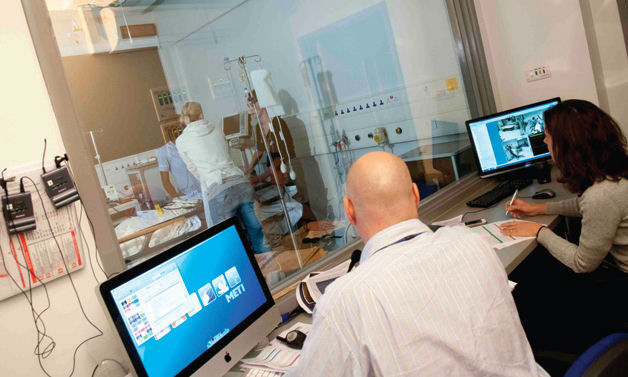30 January 2014

These days if the network is down for more than four hours, hospitals start to divert patients and shut down services. So when St George’s Healthcare NHS Trust decided it could no longer afford to patch its old desktop estate it went to tender for a robust and reliable network.
The hospital’s 33-strong IT team manages 5,000 desktops and over 160 applications, including pathology, electronic patient records and picture archiving and communications systems.
“We wanted a one stop for everything: network, storage, compute, desktop virtualisation, BYOD, and so on,” says Kerman Jasavala, St George’s deputy director of ICT.
The contract went to Cisco. It was based on a medical-grade network using CNAB (Cisco Network Architectural Blueprint) for the NHS, and was implemented by approved partner Block. The solution builds on St George’s existing Cisco infrastructure plus the vendor’s enterprise network architecture and unified computing system (UCS). These form a secure end-to-end platform for BYOD and VDI in a healthcare setting, and includes Cisco IP telephony, which replaces a legacy system.
The system serves more than 7,000 staff who look after a local population of 1.3m and deliver specialist services to some 3.5m. Its main site, St George’s Hospital in Tooting, has 900 beds, and it also provides community services through a smaller 100-bed unit and 11 health centres.
Jasavala says: “We needed to make a step-change. People were working across more sites, and mobility was becoming increasingly important, especially for clinicians who needed reliable access to do their jobs efficiently wherever they were.”
There are now more than 2,000 BYOD/ VDI users. The trust believes the only exceptions may be back-office workers for whom mobility is less of an issue.
Jasavala says they are using the Cisco AnyConnect client and a VMware View client that together allow users to selfprovision. If the user is running a Mac or Windows PC, logging on involves two stage authentication with a text token.
The platform provides consistent mobility including session persistence, regardless of device or location. Medical teams have bedside access to files, test results, and reports, improving the quality and safety of patient care. Although lower opex was not the main driver, it is emerging. Further savings will come from digitising paper records, and other clinical programmes will see electronic prescribing and clinical documentation.








